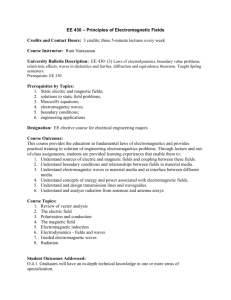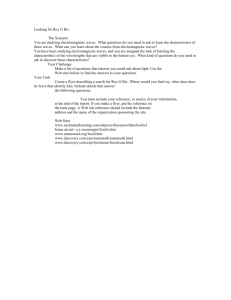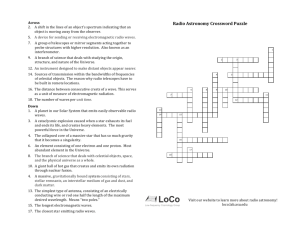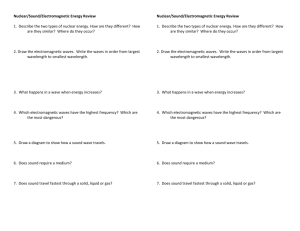Syllabus - Clinton Community College
advertisement
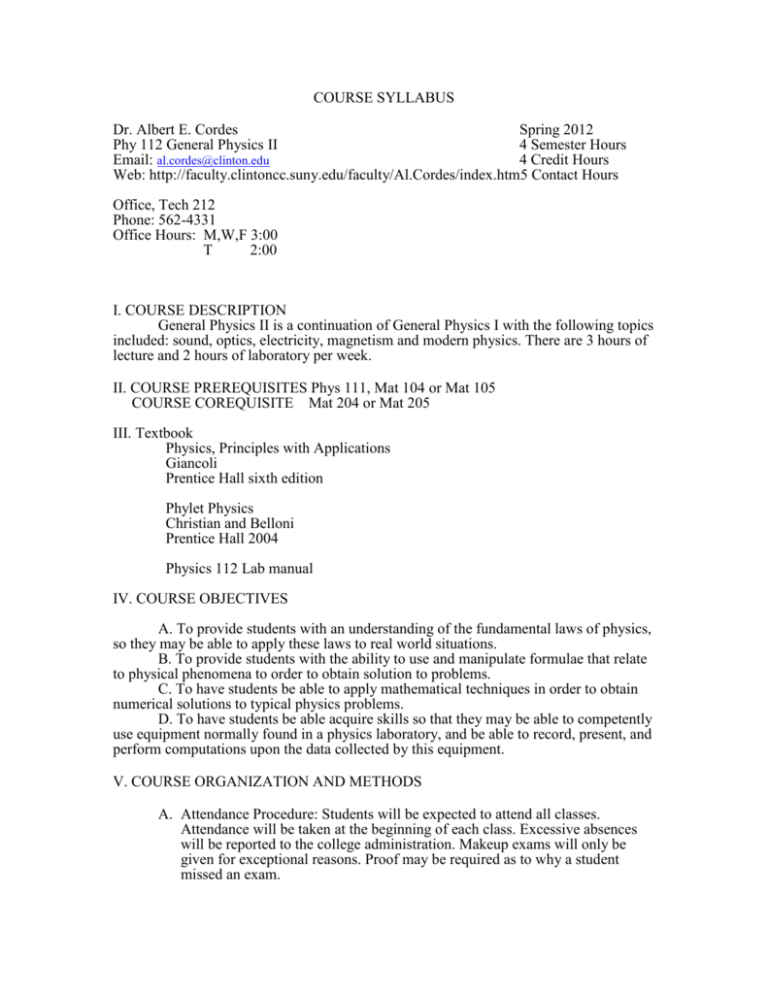
COURSE SYLLABUS Dr. Albert E. Cordes Spring 2012 Phy 112 General Physics II 4 Semester Hours Email: al.cordes@clinton.edu 4 Credit Hours Web: http://faculty.clintoncc.suny.edu/faculty/Al.Cordes/index.htm5 Contact Hours Office, Tech 212 Phone: 562-4331 Office Hours: M,W,F 3:00 T 2:00 I. COURSE DESCRIPTION General Physics II is a continuation of General Physics I with the following topics included: sound, optics, electricity, magnetism and modern physics. There are 3 hours of lecture and 2 hours of laboratory per week. II. COURSE PREREQUISITES Phys 111, Mat 104 or Mat 105 COURSE COREQUISITE Mat 204 or Mat 205 III. Textbook Physics, Principles with Applications Giancoli Prentice Hall sixth edition Phylet Physics Christian and Belloni Prentice Hall 2004 Physics 112 Lab manual IV. COURSE OBJECTIVES A. To provide students with an understanding of the fundamental laws of physics, so they may be able to apply these laws to real world situations. B. To provide students with the ability to use and manipulate formulae that relate to physical phenomena to order to obtain solution to problems. C. To have students be able to apply mathematical techniques in order to obtain numerical solutions to typical physics problems. D. To have students be able acquire skills so that they may be able to competently use equipment normally found in a physics laboratory, and be able to record, present, and perform computations upon the data collected by this equipment. V. COURSE ORGANIZATION AND METHODS A. Attendance Procedure: Students will be expected to attend all classes. Attendance will be taken at the beginning of each class. Excessive absences will be reported to the college administration. Makeup exams will only be given for exceptional reasons. Proof may be required as to why a student missed an exam. B. Methods of Instructions will include lectures, demonstrations and review of assignments given in previous classes. Homework will be assignments from Mastering Physics, textbook problems and physlets. Physlets will generally be assigned during lab, although you may at times have to complete them at home. These programs can be run on your home computer using the CD included with that text. C. Methods of Evaluation: Students will be evaluated according to the following: Homework assignments; Laboratory Notebook; Laboratory reports; 4 exams given during the course of the semester. Average will be computed according to the following formula: Homework/Quizzes Lab Reports Lab Notebooks Exam Average = 10% = 15% = 20% = 55% Letter grades will be assigned according to the following: 100 to 91 90 to 88 87-85 84-80 79-78 77-75 74-70 69-68 67-65 64-60 Below 60 A AB+ B BC+ C CD+ D F D. Academic Honesty: All students are expected to be behave with academic honesty. It is not academically honest, for example, to misrepresent another person’s words or ideas as one’s own, to take credit for someone else’s work or ideas, to accept help on a test or to obtain advanced information or confidential test materials, or to act in a way that might harm another student’s chance for academic success. When the instructor believes that a student has failed to maintain academic honesty, he or she may given an “F”, either for the assignment or the course depending upon the severity of the offense. VI. COURSE OUTLINE I. Waves (Chapter 11) A. Wave Motion B. Types of Waves C. Behavior of waves D. Standing Waves II. Sound (Chapter 12) A. Characteristics of sound B. Intensity of sound C. Vibrating strings and air columns D. Interference of sound waves E. The Doppler effect III. Electrical Charge and Electrical Fields (Chapter 16) A. Static electricity B. Charges in the atom C. The electroscope D. Coulomb's law E. The electric field ------------------EXAM #1 --------------------------------IV. Electrical Potential and Electrical energy (Chapter 17) A. Electrical potential and potential difference B. The electron volt C. Electrical potential due to a point charge D. Capacitors V. Electric Currents (Chapter 18) A. The electric battery B. Electric current C. Ohm's law and resistance D. Electric power E. Alternating current VI. DC Circuits and Instruments (Chapter 19) A. Resistors in series and parallel B. EMF and terminal voltage C. Kirchoff's Rules D. Capacitors in series and parallel E. DC ammeters and voltmeters -------------------------------EXAM #2---------------------VII. Magnetism (Chapter 20) A. Magnets and magnetic fields B. Magnetic field produced by electrical currents C. Domain theory D. Force on an electric current in a magnetic field E. Force on a moving charge in a magnetic field F. Applications VIII. Electromagnetic Induction and Faraday's laws (Chapter 21) A. Induced EMF B. Faraday's laws C. Electric Generators D. Transformers IX. Electromagnetic waves (Chapter 22) A. Maxwell's equations B. Production of electromagnetic waves C. The electromagnetic spectrum --------------------------EXAM #3--------------------------X. Geometric Optics (Chapter 23) A. The ray model of light B. Index of refraction C. Reflection and image formation D. Refraction and Snell's law E. Thin lenses XI. The Wave Nature of Light (Chapter 24) A. Huygen's principle B. Interference and Young's experiment C. Dispersion D. Diffraction and diffraction gratings E. Thin film interference F. Polarization XII. Quantum Theory and Models of the Atom (Chapter 27) A. Planck's quantum hypothesis B. Photon theory of light C. Wave-Particle duality D. Wave nature of matter E. Early models of the atom F. The Bohr model XIII. Nuclear Physics and Radioactivity (Chapter 30) A. Structure and properties of the nucleus B. Binding energy and nuclear force C. Radioactivity D. Alpha, Beta and Gamma decay F. Conservation laws G. Half life and radioactive decay H. Decay series --------------------------EXAM #4 -------------------------VII. COURSE CONTINUITY PLAN: In the case that the college officially closes because of an emergency which causes a short term disruption of this course, we will utilize e-mail to continue this course in the short term (1-3 weeks). All students need to utilize their campus e-mail to receive course related information.
